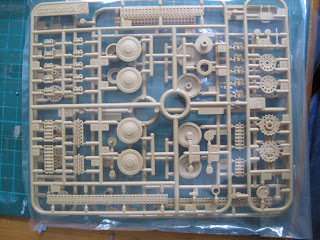So here's the first model to be put into blog form! I've made a few 1/72nd scale models over the last two or three weeks, and decided I'd gotten enough practice in to attempt something a little bigger. So I dug out the Tamiya Marder III my dad bought for me a while ago.
 |
| Courtesy of the Bundesarchiv |
I didn't know a whole lot about the Marder III before I'd opened the box, only little bits I'd picked up from games. I thought it'd be a good idea to read up on it before I started, so I headed to good old Wikipedia, the starting point for all projects! In doing so I discovered a little about the background of the Marder III. I'll briefly outline below for anyone who's interested to read, but obviously more information available on Wikipedia.
The Marder III was a German Tank Destroyer put into service around 1942 and used on all fronts of the war. It was made using a Czech Panzer 38(t) chassis and mounting a Pak 40 75mm gun on top (or a 7,6cm Russian canon before the Pak 40 was widely available.) Being a Tank Destroyer it was designed to engage tanks from long range and knock them out before being attacked itself, hence it was lightly armoured. But with a large armament to punch through enemy armour.
It was rushed into service as a stop-gap measure against Russian tanks of the time (The T-34) and continued to be used throughout the war.
Enough background I think on to the kit itself. It's seems to be well made, (a common trait of Tamiya I've read) with very little flash on the parts ( flash : excess plastic on the parts from the moulding process), and good detailing on the parts. Thanks to my dad, who has been making models far longer than I have, I decided to have a poke round on the web for people who've made the model before to see what they've done, and also to look for after-market parts which would be an improvement on the parts 'out of the box'.
I didn't get much done on it today, as I was taking it slowly, and I'd been playing games all morning... But here's the parts still on the sprue.





